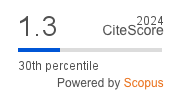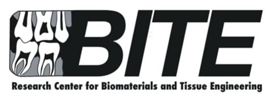Level of knowledge and learning exposure on cleft lip and palate treatment among undergraduate Universitas Indonesia dental students
Downloads
Background: Cleft lip and palate are the most common congenital orofacial anomalies. Dental students must have a basic knowledge, understanding, and awareness of comprehensive cleft management. The Faculty of Dentistry Universitas Indonesia undergraduate program uses the problem-based learning (PBL) method to teach dental students about cleft management. Purpose: This study aims to determine the level of knowledge and exposure to learning with the PBL method regarding comprehensive cleft management. Methods: A cross-sectional design was used, and data were collected from 253 dental students using an online questionnaire via Google Forms. Results: Ten preclinical students (8.5%) had a low level of knowledge, 56 (47.5%) had a sufficient level of knowledge, and 52 (44.1%) had a high level of knowledge of comprehensive cleft management. Among the clinical students, 6 (4.4%), 65 (48.1%), and 64 (47.4%) demonstrated low, sufficient, and high levels of knowledge, respectively. Furthermore, most students were content with the lectures on comprehensive cleft management (46.24% satisfied and 20.55% very satisfied) and the supervision received during the lectures (43.48% agreed and 23.71% strongly agreed). Most students believed the lectures on cleft management could be applied when they graduate as dentists. The Chi-square test showed no significant relationship between learning exposure and the student’s knowledge level. Conclusion: Most Faculty of Dentistry Universitas Indonesia students who had learned about cleft lip and palate using the PBL method had sufficient knowledge about comprehensive cleft management. However, no significant relationship was observed between learning exposure and knowledge level.
Downloads
Maskoen AM, Rahayu NS, Nasroen SL. Optimizing examination of methylenetetrahydrofolate reductase gene promoter methylation in cleft lip with or without cleft palate non-syndromic patients using the pyrosequencing method. Dent J. 2024; 57(3): 184–8. doi: https://doi.org/10.20473/j.djmkg.v57.i3.p184-188
Iswati R, Farmasyanti CA, Ayub A, Kuijpers-Jagtman AM, Alhasyimi AA. Interdisciplinary management of Class III malocclusion with cleft lip and palate. Dent J. 2023; 56(1): 7–12. doi: https://doi.org/10.20473/j.djmkg.v56.i1.p7-12
Rusdy H, Isnandar I, Siregar IB, Sinaga RCP. Association of maternal folic acid supplementation and incidence of non-syndromic cleft lip and palate. Dent J. 2022; 55(2): 76–80. doi: https://doi.org/10.20473/j.djmkg.v55.i2.p76-80
Badan Penelitian dan Pengembangan Kesehatan. Laporan nasional riset kesehatan dasar 2018. Jakarta: Kementerian Kesehatan Republik Indonesia; 2018. p. 434. web: https://repository.badankebijakan.kemkes.go.id/id/eprint/3514/
Sundoro A, Hilmanto D, Soedjana H, Lesmana R, Harianti S. Epidemiology of cleft lip and palate charity mission surgery at Bandung Cleft Lip and Palate Center, Indonesia: A 14-year institutional review. Arch Craniofacial Surg. 2024; 25(2): 62–70. doi: https://doi.org/10.7181/acfs.2023.00416
Nugraha AP, Yang H, Chen J, Yang K, Kraisintu P, Zaww K, Ma A, Wang R, Alhadi NEAM, Vanegas Sáenz JR, Hong G. β-tricalcium phosphate as alveolar bone grafting in cleft lip/palate: A systematic review. Dent J. 2023; 11(10): 234. doi: https://doi.org/10.3390/dj11100234
Agha B, Helal NMS, Al-Khafaji TJ, Farie GA, Basri O, Fleming PS. Knowledge assessment on cleft lip and palate among recently graduated dentists: a cross-sectional study. BMC Oral Health. 2023; 23(1): 689. doi: https://doi.org/10.1186/s12903-023-03388-y
Geethika B, Rakshagan. Knowledge, attitude and practices of dental students towards cleft lip- a survey. Int J Curr Res. 2017; 9(9): 57973–5. web: https://www.journalcra.com/article/knowledge-attitude-and-practices-dental-students-towards-cleft-lip-survey
Sruthi S, Sivakumar A, Saravana Pandian K, Navaneethan R. Knowledge, awareness, and attitude on cleft lip and palate management among dental students. Drug Invent Today. 2018; 10(SP1): 2608–13. web: https://www.researchgate.net/publication/333263321
Ariani N, Mursid S, Odang RW, Sukotjo C, Kusdhany LS. Indonesian undergraduate dental students’ perceptions toward implant treatment and education. J Investig Clin Dent. 2013; 4(2): 107–12. doi: https://doi.org/10.1111/j.2041-1626.2012.00166.x
Amir LR, Tanti I, Maharani DA, Wimardhani YS, Julia V, Sulijaya B, Puspitawati R. Student perspective of classroom and distance learning during COVID-19 pandemic in the undergraduate dental study program Universitas Indonesia. BMC Med Educ. 2020; 20(1): 392. doi: https://doi.org/10.1186/s12909-020-02312-0
Alkhuwaiter S, Aljuailan R, Banabilh S. Problem-based learning: Dental student’s perception of their education environments at Qassim University. J Int Soc Prev Community Dent. 2016; 6(6): 575–83. doi: https://doi.org/10.4103/2231-0762.195512
Alrahlah A. How effective the problem-based learning (PBL) in dental education. A critical review. Saudi Dent J. 2016; 28(4): 155–61. doi: https://doi.org/10.1016/j.sdentj.2016.08.003
Ghani ASA, Rahim AFA, Yusoff MSB, Hadie SNH. Effective learning behavior in problem-based learning: A scoping review. Med Sci Educ. 2021; 31(3): 1199–211. doi: https://doi.org/10.1007/s40670-021-01292-0
Mohan S, Mahipathy SRRV, Ganesh P, Durairaj AR, Sundaramurthy N, Jayachandiran AP, Rajendran S. Knowledge of cleft lip and cleft palate among medical students of a Tertiary Care Hospital in South India. J Pharm Res Int. 2021; 33: 513–7. doi: https://doi.org/10.9734/jpri/2021/v33i60B34648
Brand HS, van der Cammen CCJ, Roorda SME, Baart JA. Tooth extraction education at dental schools across Europe. BDJ Open. 2015; 1(1): 15002. doi: https://doi.org/10.1038/bdjopen.2015.2
Fell M, Dack K, Chummun S, Sandy J, Wren Y, Lewis S. Maternal cigarette smoking and cleft lip and palate: A systematic review and meta-analysis. Cleft Palate Craniofacial J. 2022; 59(9): 1185–200. doi: https://doi.org/10.1177/10556656211040015
Rasyida A, Kamadjaja S, Kamadjaja D, Bramantoro T, Sumarta NM. Utilization of cleft lip and palate postoperative care guidebook for caregivers based on local wisdom for rural area communities. J Int Oral Heal. 2020; 12(1): 80–5. doi: https://doi.org/10.4103/jioh.jioh_136_19
Sosiawan A, Kurniati M, Danudiningrat CP, Wahjuningrum DA, Mulyawan I. The role of family history as a risk factor for non-syndromic cleft lip and/or palate with multifactorial inheritance. Dent J. 2021; 54(2): 108–12. doi: https://doi.org/10.20473/j.djmkg.v54.i2.p108-112
Lehtonen V, Sándor GK, Ylikontiola LP, Koskinen S, Pesonen P, Harila V, Anttonen V. Dental treatment need and dental general anesthetics among preschool‐age children with cleft lip and palate in northern Finland. Eur J Oral Sci. 2015; 123(4): 254–9. doi: https://doi.org/10.1111/eos.12195
Schmidt HG, Rotgans JI, Yew EH. The process of problem-based learning: What works and why. Med Educ. 2011; 45(8): 792–806. doi: https://doi.org/10.1111/j.1365-2923.2011.04035.x
Rusdy H, Isnandar, Siregar IB, Veronica. Cleft lip and palate based on birth order and family history at Mitra Sejati General Hospital, Indonesia. Dent J. 2022; 55(4): 221–5. doi: https://doi.org/10.20473/j.djmkg.v55.i4.p221-225
Javith I, Priyadarshini R, Suganya P. Knowledge and attitude towards development defects of oral cavity - A survey among dental undergraduates. Nat Volatiles Essent Oils. 2021; 8(5): 6965–79. web: https://www.cabidigitallibrary.org/doi/pdf/10.5555/20220168070
American Dental Association. U.S. dental school grads by gender, 2021-22. 2022. Available from: https://www.ada.org/resources/research/health-policy-institute/dental-school-grads-gender-2021-2022. Accessed 2024 Aug 29.
Wang H, Xuan J, Liu L, Shen X, Xiong Y. Problem-based learning and case-based learning in dental education. Ann Transl Med. 2021; 9(14): 1137. doi: https://doi.org/10.21037/atm-21-165
Revathy E, Arthanari A. Knowledge and awareness about cleft lip among undergraduate dental college students in Chennai - A questionnaire study. Drugs Cell Ther Hematol. 2022; 10(2): 451–62. web: https://www.researchgate.net/publication/359209842
Andrews TC, Auerbach AJJ, Grant EF. Exploring the relationship between teacher knowledge and active-learning implementation in large college biology courses. Knight J, editor. CBE—Life Sci Educ. 2019; 18(4): ar48. doi: https://doi.org/10.1187/cbe.19-01-0010
Copyright (c) 2025 Dental Journal

This work is licensed under a Creative Commons Attribution-ShareAlike 4.0 International License.
- Every manuscript submitted to must observe the policy and terms set by the Dental Journal (Majalah Kedokteran Gigi).
- Publication rights to manuscript content published by the Dental Journal (Majalah Kedokteran Gigi) is owned by the journal with the consent and approval of the author(s) concerned.
- Full texts of electronically published manuscripts can be accessed free of charge and used according to the license shown below.
- The Dental Journal (Majalah Kedokteran Gigi) is licensed under a Creative Commons Attribution-ShareAlike 4.0 International License

















